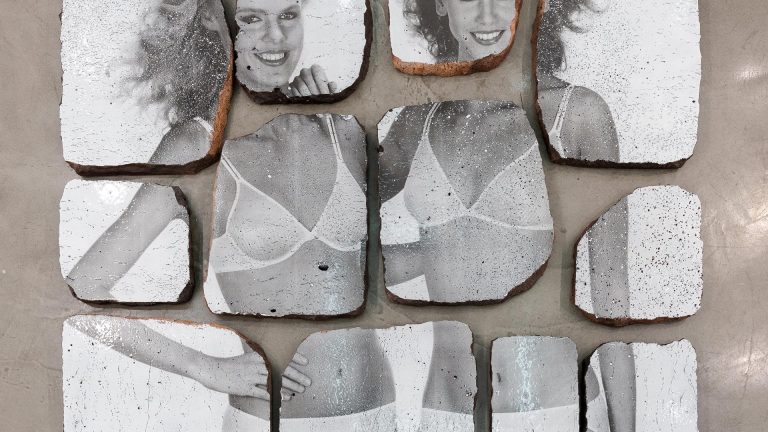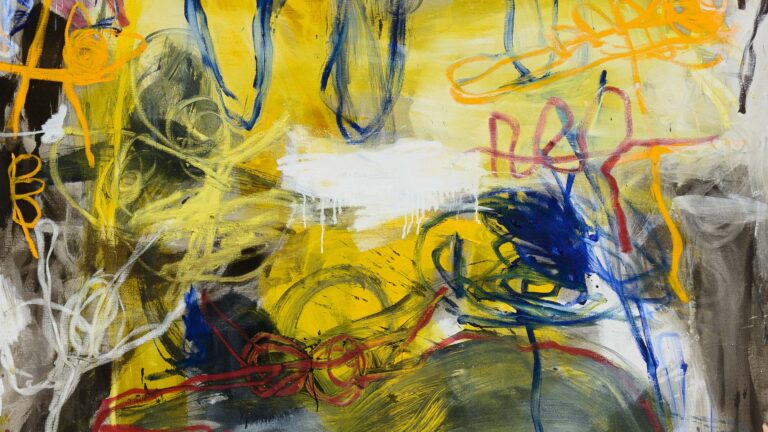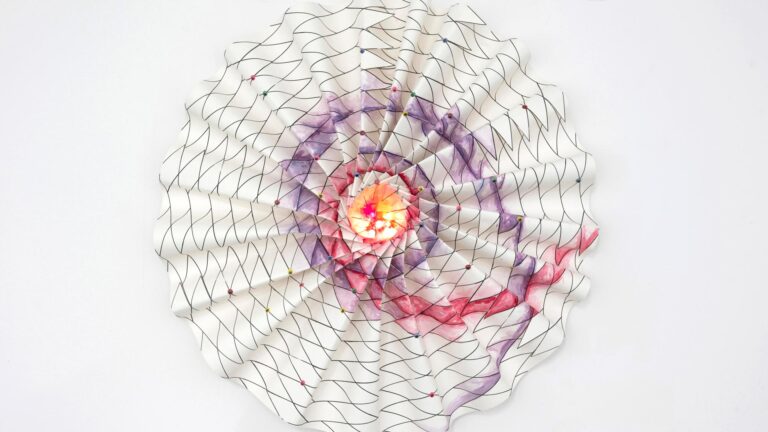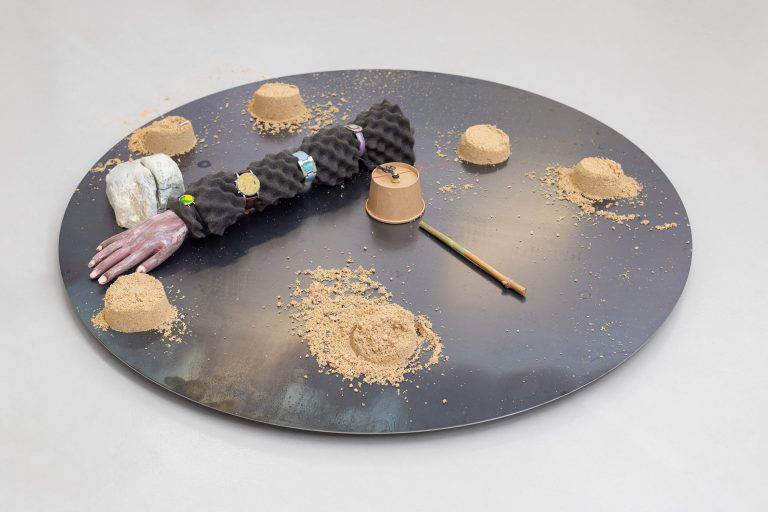Artist: Mar García Albert
Exhibition title: Take, Retake, and Remake (Back the Night)
Venue: La Salle de Bains, Lyon, France
Date: May 24 – July 20, 2024
Photography: all images copyright and courtesy of the artist and La Salle de Bains, Lyon
“It is here that the cri*que of authorship is relevant – the cri*que of the no*on of a fully coherent author subject previous to the act of crea*on, producing a work of art which then becomes merely a mirror or, at best, a vehicle for communica*ng a fully formed inten*on and a consciously grasped experience. What I am proposing is that on the one hand we consider the social forma*on of the producer within class and gender rela*ons, but also recognize the working process or practice as the site of a crucial social interaction between producer and materials.”1
This observation by the art historian Griselda Pollock figures among the texts and excerpts that Mar García Albert wanted to share while putting together the current show. On its own, the quota*on introduces several cri*cal paths forward that are in fact the direc*ons in which the ar*st’s work moves, however much it appears kind of thin, even frivolous, in light of its li\le hearts and Hello Ki\y depic*ons.
This is indeed what touches us in her paintings – like those by Camila Oliveira Fairclough and Owen Piper, who have also exhibited at La Salle de bains. It is the joy given off, especially by an art practice linked to life, even in its most banal aspects. This jubila*on, introduced by an off-hand gesture subsequently worked to form a smiley face, has nothing to do with sa*sfac*on. Quite the opposite, it conveys an investment in the experience of this “crucial… interac*on” with art materials, an experience that is forever curious, risky, and sometmes unsuccessful, not that it matters.
This joyousness then isn’t some false reflection in García Albert’s paintng. Nevertheless, her work is underpinned by a conceptual approach, which is itself based on a demanding analysis of the medium along with the social and political history of art.
The ar*st decided to fully embrace the night mo*f for this show by referencing a long pictorial tradition that marries formal challenges to the expression of our spiritual a\rac*on to the shadows. It makes it possible to welcome the ugly and the abject as in Goya’s Pinturas negras, his Black Pain*ngs series, turning even further away from the neoclassicism of the period. But the idea also popped into her head of doing a pain*ng on a toilet seat, which she has just done in homage to Lee Lozano, a seman*c shie in French that is a bit silly but valid just the same, from lune-e (toilet seat) to lune (moon).
In terms of representation, all that remains of the night are a few star-shaped s*ckers stuck to the paintings. That’s not coun*ng those faces energe*cally sketched out in a single color which the title of the show refers to. That *title is an adaptation of the name given to the annual march for women’s rights first launched in the United States in the 1970s and still held today (Women) Take Back the Night. For these portraits, García Albert modeled her work on one of the rare group of documents chronicling these marches, found in the archives of Barnard College, a private women’s college in New York City.
While the pain*ngs featured in the show are contextualized with a reference to militant feminism – along with a row of small mirrors, other parerga, i.e., supplementary or related pieces – we can also read in the display a commentary on the poli*cally commi\ed work that the ar*st would like to set apart from her commitment in pain*ng. In that sense, the speed with which she executes these portraits of anonymous demonstrators runs counter to a current trend in the renewal of figura*ve pain*ng that is free from all cri*cal debate, especially when it is considered enough to merely ascertain that the ar*st in ques*on belongs to one or another group iden*ty.2 The face depicted in pink in the series of women’s portraits seems even to be laughing at the weakness of such a political argument.
It was while reading Lucy Lippard that García Albert became aware of the Take Back the Night marches. In her text called “Sujet Tabou” (1980), the art cri*c stressed the significant contributions of women to the art of the 1970s, when they helped to introduce social and political subjects and cri*que the myth of the crea*ve genius by impor*ng into art inappropriate or taboo subjects, that is, related to the material, social, and bodily condi*ons of art. Night, the *me of reproduc*ve work and zone of invisibility, is also a taboo. Like the proletarians Jacques Rancière met, don’t women have other moments than nigh[me to get organized as a group, read, write, create?
García Albert is forever making inappropriate and unclean subjects an integral part of her painting, both as a cri*que of the subject in painting and as references to the conditions of its production. There are all those allusions to cleanliness, i.e., brushes that match the colors on a painting and especially toilet paper mo*fs. Something similar occurs when she begins pain*ng on the plas*c wrapping new ready-to-use canvases, as if her life as a mother and worker didn’t leave her the *me to remove the packaging material.
Besides all the aspects offered by the unpredictable surface according to the quality of the merchandise, the paint applied to the surface layer of the protec*ve film raises deep questions about our assumptions. The old idea that the picture is permeated by the ar*st’s subjec*vity or their “fully formed inten*on” is canceled out along with the commercial value of the painted object.
In a word, the picture does not get painted. Nor can it be repainted for it remains available for an initial application of paint. The painted surface makes visible for a limited *me the con*ngency of the practice, deliberately granting greater importance to the experience.
[1] Griselda Pollock, “Modernity and the Spaces of Femininity,” Vision and Difference: Femininity, Feminism and Histories of Art, London, New York: Routledge, 1988, 82-83.
[2] See Larne Abse Gogarty, “Figuring Figura*on,” Art Monthly 465 (April 2023).























